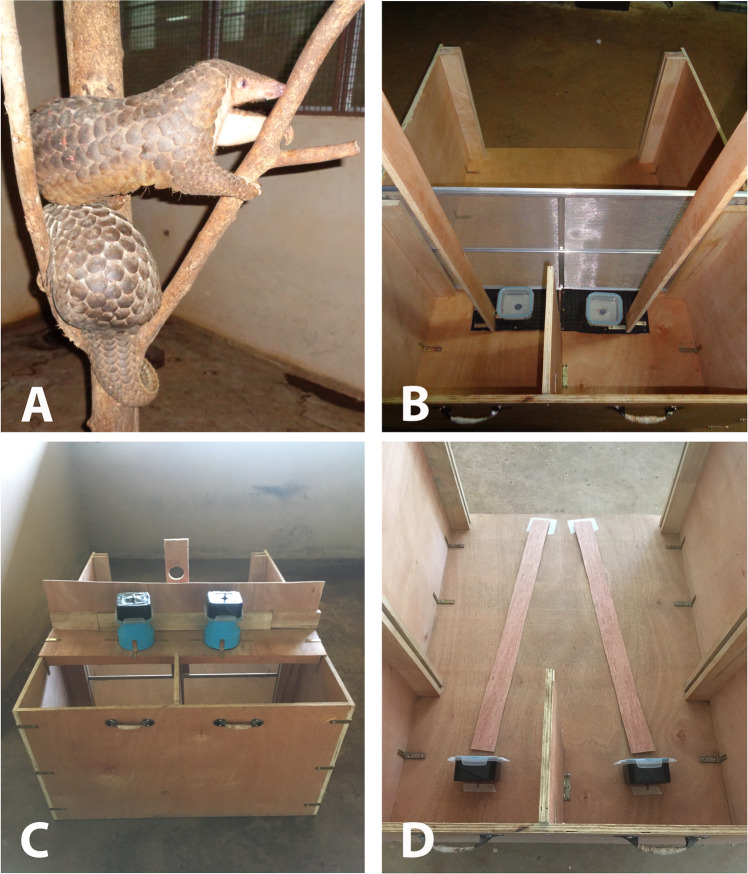Figure 1.
Images of the pangolins and experimental set-ups for both phases of testing. (A) Two Sunda pangolins in an artificial tree inside their testing area. (B) Experimental setup used for all Phase I conditions (the containers in this photograph are controlled for a ‘visual’ condition trial). The view is from behind the testing apparatus. Once the pangolin enters the chamber (from the top of the image), the metal mesh screen is removed and the pangolin can investigate the two containers. The containers are then pulled to the back of the chamber, at which point the pangolin can make a choice and the lid of the chosen container is removed. (C) Experimental setup for ‘olfactory distance’ testing in Phase II. Similar to Phase I, the pangolin entered the chamber (from the top of the image), the screen was removed, and the pangolin could investigate the two containers, which were positioned on top of PVC pipes above the pangolin’s head. This photograph represents a 15-cm training trial. (D) Experimental setup for ‘scent trail’ testing in Phase II. The pangolin could again enter the chamber but there was no screen to remove; the pangolin could follow the scent on either of two wooden planks that led to a baited (‘food’ plank) or unbaited (‘water’ or ‘mint’ plank) container. This image does not include the cloth tape applied to the planks prior to testing. All photos by J.D.D.

